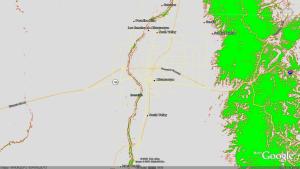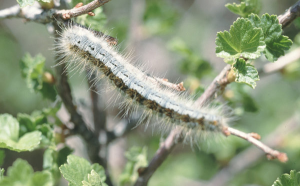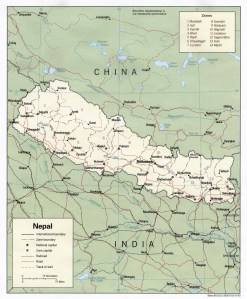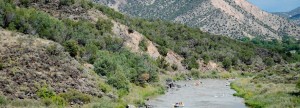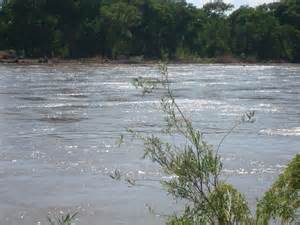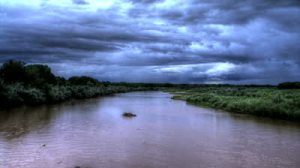Join research teams in Nepal and New Mexico to learn about global ecosystems, the important roles of large and small animals within an ecosystem, and the threats to their survival.
The caterpillar is at the bottom of the food chain, AND can also be one of the most plentiful forest inhabitants, which means they are critical for the ecosystem. Changes in their populations may provide early warning of a distressed ecosystem.
Butterflies are a vital and unique part of the life support system in Nepal. There are 635 butterfly species present in Nepal ecosystems. Most species are concentrated in the tropical forest areas. The Himalayan flowers are dying out because of the reduction in the numbers of the butterfly species. When butterflies die, the pests that they eat increase and the farmer is threatened. Those who benefit by having their pests eaten by caterpillars and their crops enhanced by cross pollination are hurt. The ecosystem that sustains Nepal is being thrown out of gear. The reduction in greenery, pesticides and the theft of butterflies from the Himalayas has serious implications for the preservation of biodiversity.
In New Mexico, there are over 300 species of Butterflies. New Mexico is ranked third in the nation for butterfly populations. The importance of butterflies in New Mexico ecosystems is significant, as they are pollinators for wildflowers and agricultural crops and promote the conservation of our natural wildlife heritage. The Sandia hairstreak thrive in New Mexicos’ semiarid climate where different years bring floods and droughts and where the terrain is beautiful but rugged. The Sandia hairstreak can be found among the native beargrass in New Mexico’s wide-open spaces as well as in towns and cities where the beargrass plant grows…the Sandia hairstreak, a New Mexico native, does not migrate, but stays in the New Mexico landscape year-round.
Your mission as a student:
- Learn about endangered ecosystems, caterpillars, and butterflies.
- Learn about Ecosystem research, and why scientific study of natural populations are important.
- Do your own research on ecosystems and food webs in your community.
Field Sites:
Field Reports
Welcome
Welcome to New Mexico! For the next two weeks we will spend our days and nights together as we research caterpillars and explore the forest.
Terry Rodgers, a forest health official with the U.S. Forest Service in Albuquerque, said officials have had numerous calls from New Mexico about the pests.
“Apparently the caterpillars were just extreme in their numbers and causing extreme defoliation,” he said. “They have already stripped the trees.”
While caterpillars were in force last summer, Rodgers said this year’s invasion was likely made worse because of the mild winter.
Hosts: Aspen, willows, cottonwoods, and mountain mahogany.
Biology:
Larvae overwinter as first instars inside egg masses glued around twigs. Larvae emerge from egg masses in spring and construct silken tents on branches that are used for shelter and molting during the daytime. At night, caterpillars feed outside of the tents. As the larvae mature, they disperse and become solitary feeders. Moths emerge from cocoons and glue egg masses to live twigs that are less than 2 cm in diameter.
Mature larvae are 4 to 5 cm long and vary widely in coloration. Their heads are blue to black and body color patterns are mixtures of black, orange and blue.
Symptoms/Signs:
Western tent caterpillar is an early season defoliator
with feeding damages typically occurring between May and June. Symptoms include
moderate to complete defoliation of trees; large silken tents on branches; and
presence of larvae in and around the tents. Trees repeatedly defoliated will
have sparse foliage, minor branch dieback, and in some cases, tree mortality. Larvae are usually quite hairy.
After emerging from their eggs, the caterpillars feed indiscriminately
for about a month and build tents in the tree branches before finding a place
to spin their cocoons.
In about two weeks, a brown moth with a stout body emerges.
Effects:
Heavy defoliation of aspen for a number of years will cause growth loss and
branch dieback. Some mortality may also occur during prolonged outbreaks.
Outbreaks, however, are generally short lived, generally lasting 2 to 3 years.
**In Nepal, Caterpillars are much more essential to the Tropical Forest ecosystsem. They have even become a comodoty!
Biodiversity
Globally, Nepal ranks twenty-fifth in biodiversity with about 118 ecosystems, 75 vegetation types and 35 forest types. There are over 5,100 species of flowering plants. Out of the 5,100 species about 370 species of flowering plants are considered endemic to Nepal and about 700 species are known to possess medicinal properties. Protected Areas alone contain 191 endemic species. Anthropogenic effects have led to inclusion of 61 species on the list of threatened species for Nepal. Butterfly theft is contributing to these decreases in species. They are critical to their environment as pollinators, and pest control. Without butterflies, the pest kill out plants, and the entire ecosystem suffers.
Nepal also has an estimated 700 species with medicinal properties and about 571 species have already been confirmed as medicinal plants.
With the drastic reduction in Butterflies due to theft, the Ecosystems are endangered in Nepal.
Show What you know with these Game-Based Learning lessons!





